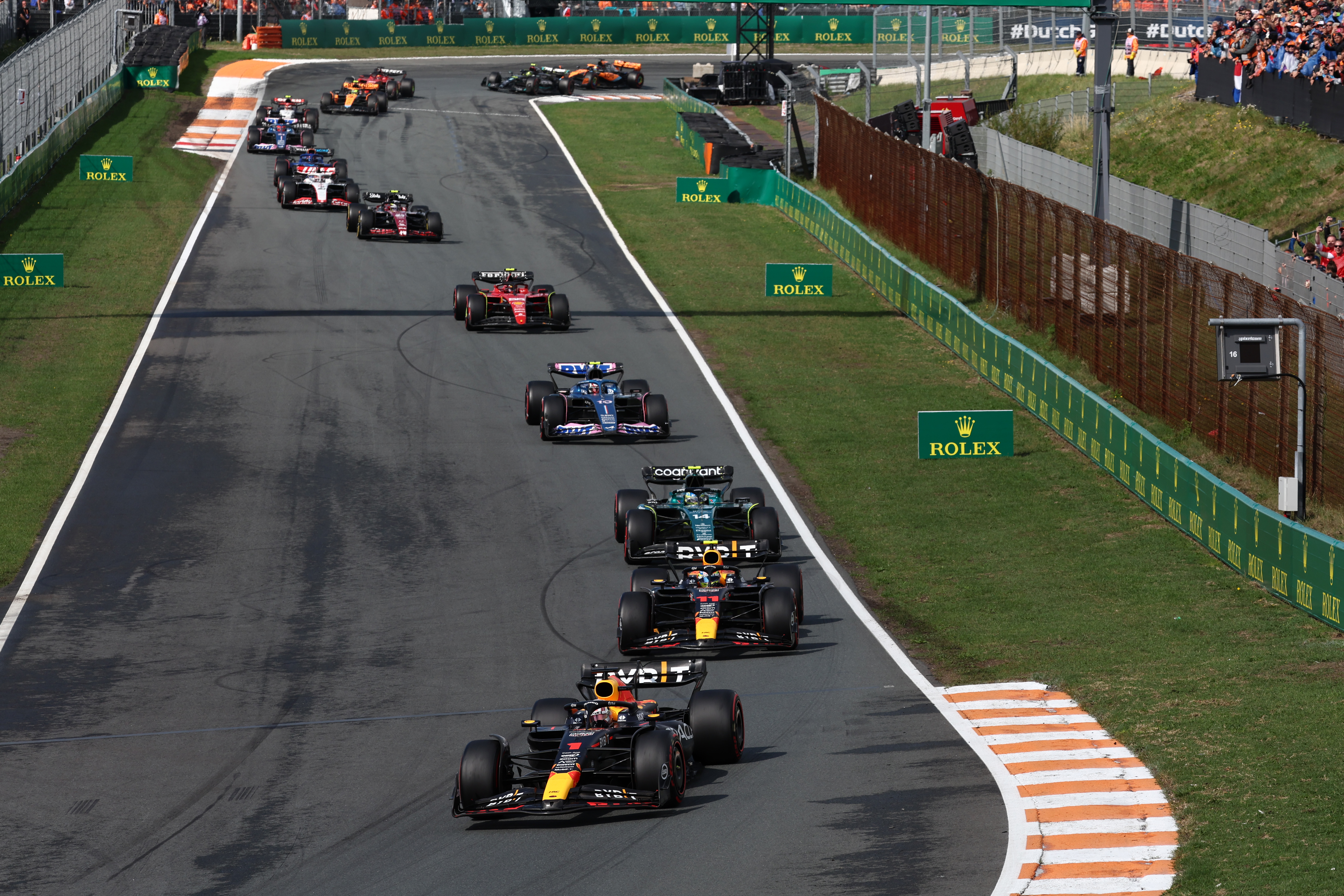The FIA has sent a draft proposal to all Formula 1 teams for a new technical directive aimed at tightening the policing of the flexibility of wings on F1 cars following “observations across several cars”.
Rumblings around the flexibility of the front wings on various teams have been constant through the 2023 season, with the FIA keen to ensure the spirit of the regulations – and the key aim of ensuring following another car is easier in F1’s new era – are being achieved.
The proposed changes aren’t aimed at any one particular team – Aston Martin has repeatedly shied away from suggestions it had to change its front wing specification earlier in the year due to concerns it was breaching the flexing rules – but are instead a general improvement of the policing.
“We are continually monitoring the deflection characteristics of aerodynamic assemblies to ensure cars adhere to the requirements of Technical Regulations Article 3.2.2”, an FIA statement issued to The Race read.
“This is partly through the deflection tests that are specified in Article 3.15, but also through ad hoc tests and inspections that can be beyond what teams might usually expect.
“These additional observations can lead to a need to clarify how we believe the regulations should be interpreted.
“There has been a draft TD on the subject of bodywork flexibility issued in response to observations across several cars, and ensures that the FIA and teams all have a common understanding of the way we should interpret the regulations.”
Technical regulations article 3.2.2 concerns aerodynamic influence.
“All aerodynamic components or bodywork influencing the car’s aerodynamic performance must be rigidly secured and immobile with respect to their frame of reference,” it says.
“Furthermore, these components must produce a uniform, solid, hard, continuous, impervious surface under all circumstances. Any device or construction that is designed to bridge the gap between the sprung part of the car and the ground is prohibited under all circumstances.”
Mark Hughes says

Flexi wings are an ongoing area of challenge for the governing body and have been for decades.
Teams always chase this area because nothing can be perfectly rigid and so there are always ways around any interpretation given as to what defines non-flexing.
There are big advantages to be had, not only in reducing drag at speed while retaining downforce when needed – but also in directing the outwash from the wing into the most aerodynamically productive places.
The FIA is keen to keep control of this aspect in particular because the whole impetus behind the regulations introduced in 2022 was to keep the wake of the cars relatively clean.
Outwashing airflows make that wake more turbulent and therefore make things more difficult for the following car. Methods of mounting the wings have been heavily scrutinised but now the internal structures of the front wings are an increasing area of interest to the FIA.
The FIA sending a draft to the teams is standard procedure and likely indicates a mid-season introduction of the new technical directive could come in the next few weeks.
The changes are a tightening up of the current policing rather than a revolutionary overhaul.


